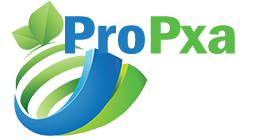Interventional Neurology, also known as Neurovascular Devices, is a non-surgical specialty that uses minimally invasive, image-guided procedures to treat the most intricate and deadly illnesses of the brain, neck, and spine. Patients with neurovascular illnesses, which mostly affect and harm the human brain, have severe changes in the vascular architecture of their neural tissues and blood vessels.
The market for neurovascular devices in 2021 was worth USD 2.82 billion, and by 2030 it will be worth USD 5.92 billion, growing at a 8.6% CAGR during the forecast period.
The expansion of the neurovascular devices market has been positively impacted by factors like proactive government initiatives, rising consumer awareness, and significant demand for minimally invasive surgeries. During the projection period, the market will grow due to the development of healthcare technology and the rise in neurovascular treatments performed worldwide. Demand for neurovascular devices will increase with the growing geriatric population.
Market Dynamics
Drivers
The market for neurovascular devices is expanding due to the increasing frequency of neurovascular illnesses among the world’s population. Neurological devices are frequently used to diagnose and treat diseases of the brain and central nervous system. The demand for neurovascular devices is increasing due to the growing acceptance of minimally invasive operations as a result of technological developments in the field of neurology. The rising prevalence of neurological conditions like stroke, epilepsy, and cerebral aneurysm in the general population is driving the need for neurovascular devices.
The creation and expanded use of neurovascular devices result from rising corporate and government investments in the research and development of sophisticated healthcare infrastructure and infrastructure. The existence of technologically enhanced neurovascular devices has substantially aided in the development of advanced treatments for a variety of neurological illnesses.
Restraints
The use of neurovascular devices in small institutions is constrained by the high cost of treating neurovascular illnesses, maintenance costs, and other indirect costs. Only a few people can afford therapy for neurological illnesses due to limited funding options.
Opportunity
Innovative technologies will continue to broaden the spectrum of neurovascular devices available for treating various aneurysm types safely and efficiently. Aneurysm management is always improving, with sophisticated technology at the forefront of innovation. According to the Southwestern Medical Center, approximately 795,000 people in the United States suffer from a stroke each year. The increased efficacy of the tools produced will lower the mortality rate caused by stroke.
Market Segmentation
By Device
In 2022, the cerebral embolization and aneurysm coiling devices segment led the market with a revenue share of nearly 34.79%. Aneurysms can be treated using coil embolization, a minimally invasive technique that seals the sac and lowers the risk of bleeding. The increasing rate of the aneurysm will drive segment growth throughout the forecast period.
The neuro-thrombectomy devices segment will grow at the greatest CAGR over the forecast period. This segment will expand due to an increase in growth tactics used by the major market players, including product launches, mergers and acquisitions, and a rise in the incidence of acute ischemic stroke.
By Therapeutic Application
Due to factors such as the rising frequency of hypertension, stroke, and other neurological illnesses, stroke held the biggest market share of nearly 57.10% in 2022. Strokes are the second largest cause of mortality worldwide and are responsible for over 140,000 fatalities annually in the United States. The global government has launched several programs to avoid stroke. Examples include the National Institute of Neurological Stroke awarding a new USD 11.3 million grant to the Udall Center at the University of Minnesota Medical School in October 2021.
By End-Use
In 2022, the hospital segment was the biggest market, with a revenue share of nearly 70.95%. The largest share of this segment is due to the rise in patients with neurovascular conditions. Such as ischemic and hemorrhagic stroke, brain aneurysms, traumatic brain injury (TBI), and arteriovenous malformation. For instance, the World Stroke Organization estimates that 1 in 4 people. Above 25 will have a stroke at some point in their lifetime.
Regional Analysis
North America was the market leader in 2022. With a revenue share of nearly 26.44% due to the presence of major companies in the region. Including Penumbra, Inc., Stryker Corporation, Johnson & Johnson, and Merit medical systems, Inc. According to Phenox Inc., the FDA has approved the use of their preset. Thrombectomy Device for the treatment of acute ischemic stroke. Additionally, the market for neurovascular devices is growing in this region due to the increased frequency of neurological illnesses. And the rising desire for minimally invasive surgical treatments.
Key Players
- Stryker
- Terumo Corporation
- Inc.
- Medtronic Plc
- Micro Port Scientific Corporation
- Johnson & Johnson Corporation
- Merit Medical Systems
- Gore & Associates Inc.
- Others
The market for neurovascular devices in 2021 was worth USD 2.82 billion. And by 2030 it will be worth USD 5.92 billion, growing at a 8.6% CAGR during the forecast period. The market for neurovascular devices is stimulated by the rising incidence of neurological diseases, technical advancements. And rising interest in minimally invasive procedures.
Related Reports:
Bakery Processing Equipment Market Report – The global bakery processing equipment market will witness a robust CAGR of 5.91%, valued at $13.02 billion in 2021. Expected to appreciate and reach $21.82 billion by 2030, confirms Strategic Market Research.




















